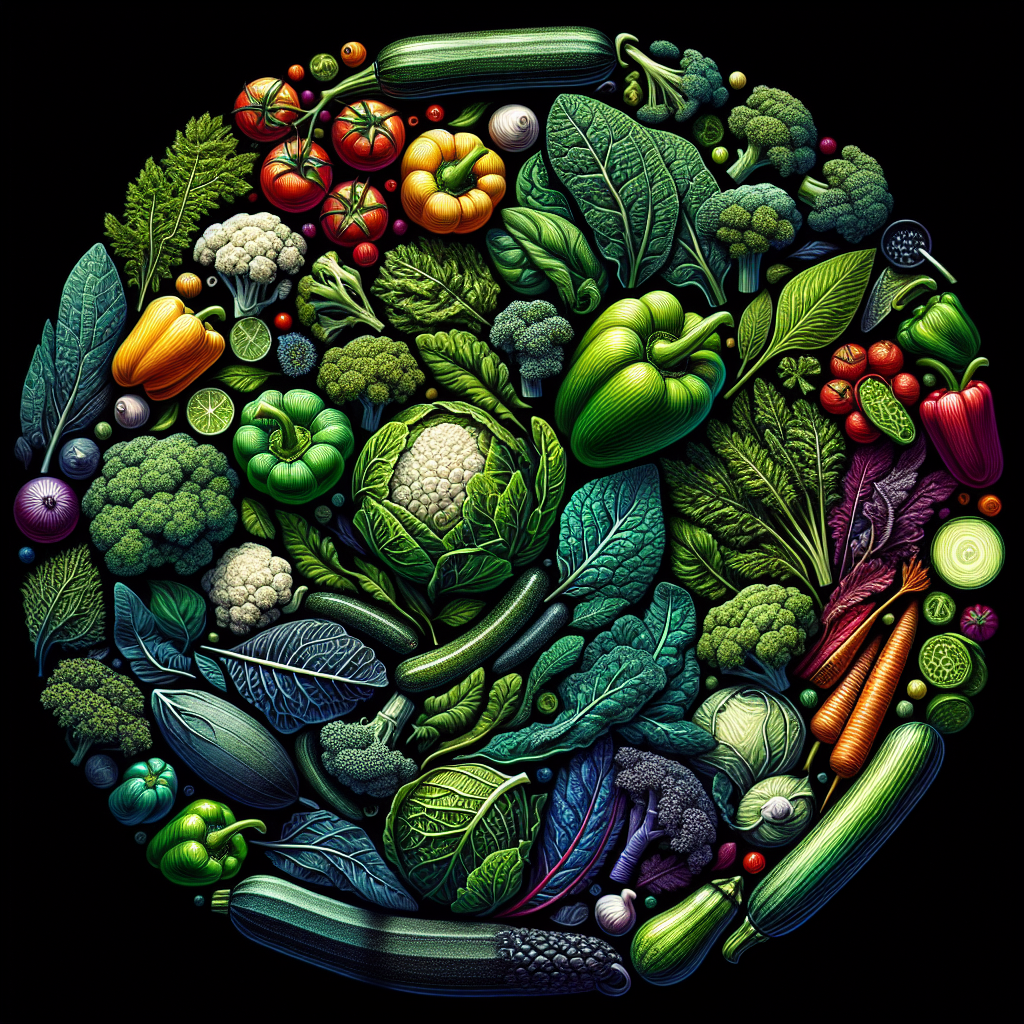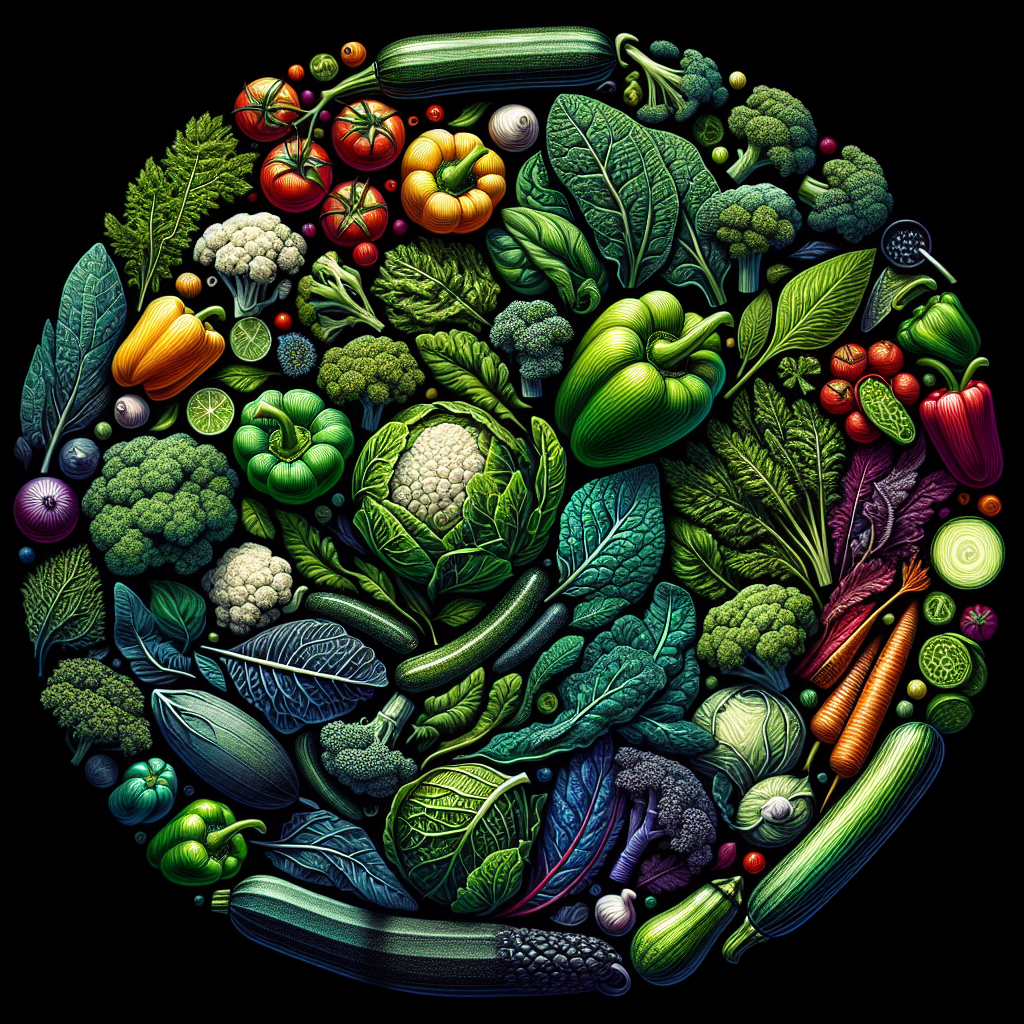
Have you ever wondered how the cooking technique of sous vide can impact the color of vegetables? Well, prepare to be surprised as we delve into the fascinating world of sous vide cooking and its effect on the vibrant hues of your favorite veggies. From vibrant greens to radiant oranges, the way you cook vegetables can truly make a difference in the final appearance on your plate. Let’s explore the science behind sous vide and how it transforms the color of vegetables, creating a visually stunning and delicious culinary experience.
Understanding Sous Vide Cooking
What is sous vide cooking?
Sous vide cooking is a method that involves cooking food in a vacuum-sealed bag, immersed in a precisely controlled water bath. This technique allows for precise temperature control, resulting in perfectly cooked food with consistent results every time.
How does sous vide cooking work?
In sous vide cooking, the food is first vacuum-sealed in a bag, removing all air pockets. The sealed bag is then placed in a water bath, where the temperature is precisely regulated using immersion circulators or water ovens. The controlled temperature ensures that the food is cooked evenly and retains its natural flavors and textures.
Advantages of sous vide cooking
Sous vide cooking offers several advantages over traditional cooking methods. Firstly, it allows for precise control of cooking temperatures, resulting in food that is perfectly cooked to the desired level of doneness. Additionally, because the food is cooked in a sealed bag, it retains its natural juices and flavors, resulting in enhanced taste and tenderness. Sous vide cooking also allows for batch cooking and can be a time-saving technique as it eliminates the need for constant monitoring and flipping of the food.
Impact of Temperature on Vegetable Color
The role of temperature in cooking vegetables
Temperature plays a crucial role in the cooking process, especially when it comes to vegetables. Different temperatures can have varying effects on the color, texture, and overall quality of vegetables.
Effects of high heat on vegetable color
When vegetables are exposed to high heat during cooking, their vibrant colors can fade or turn dull. This is because high heat leads to the denaturation of pigments and the breakdown of chlorophyll, resulting in a loss of color intensity.
How sous vide cooking differs in temperature control
Sous vide cooking excels in temperature control, allowing for precise and consistent cooking temperatures. By cooking vegetables at lower temperatures for longer periods of time, sous vide minimizes the risk of color loss and texture changes.
Preserving vibrant colors with precise temperatures
Sous vide cooking enables the preservation of vibrant vegetable colors by providing precise control over cooking temperatures. By choosing the appropriate temperature for each vegetable, you can retain their natural pigments and ensure visually appealing dishes.

Enzymatic Reactions and Color Changes
Understanding enzymatic reactions in vegetables
Enzymatic reactions in vegetables are responsible for color changes that occur when they are exposed to air or heat. Enzymes, such as polyphenol oxidase, react with oxygen and phenols, resulting in the browning of vegetables.
Factors influencing enzymatic reactions
Several factors can affect enzymatic reactions in vegetables, including pH levels, temperature, and the presence of oxygen. Each vegetable has its own optimal conditions for enzymatic reactions, which can impact the final color and quality of the cooked vegetable.
Polyphenol oxidase and browning
Polyphenol oxidase is an enzyme present in many vegetables that is responsible for enzymatic browning. It reacts with phenols to produce brown pigments, negatively affecting the color and visual appeal of the vegetables.
Preventing enzymatic browning with sous vide
Sous vide cooking helps prevent enzymatic browning by minimizing the exposure of vegetables to oxygen. By vacuum-sealing the vegetables in airtight bags and cooking them at lower temperatures, you can preserve the natural pigments and prevent enzymatic browning.
Retaining natural pigments
One of the advantages of sous vide cooking is its ability to retain the natural pigments in vegetables. By carefully controlling the cooking temperature and minimizing oxygen exposure, sous vide allows you to preserve the vibrant colors of the vegetables, resulting in visually stunning dishes.
Impact of Cooking Time on Vegetable Color
The role of cooking time on vegetable texture and color
Cooking time can significantly impact both the texture and color of vegetables. Overcooking vegetables can lead to texture loss and a decrease in color intensity.
Overcooking and loss of color
When vegetables are overcooked, they can become mushy and lose their vibrant colors. The longer they are exposed to heat, the more the pigments break down, resulting in a loss of color.
Benefits of sous vide for precise cooking times
One of the advantages of sous vide cooking is its precise control over cooking times. By setting the desired cooking time, you can ensure that the vegetables are cooked to perfection without the risk of overcooking or loss of color.
Retaining vibrant colors with shorter cooking durations
Sous vide cooking allows for shorter cooking durations while still maintaining vibrant colors in vegetables. By cooking the vegetables at lower temperatures for shorter periods, you can achieve the desired texture and color without risking overcooking.

Preserving Texture in Sous Vide
How sous vide retains vegetable texture
Sous vide cooking is known for its ability to preserve the natural texture of vegetables. By cooking the vegetables at lower temperatures, the cell walls are not subjected to the same amount of heat and pressure as in traditional cooking methods, resulting in a more delicate and satisfying texture.
Minimal water loss and nutrient preservation
Another advantage of sous vide cooking is that it minimizes water loss during the cooking process. By cooking vegetables in vacuum-sealed bags, the natural juices and nutrients of the vegetables are retained, resulting in a more flavorful and nutritious final product.
Preventing texture loss due to prolonged heat exposure
Prolonged heat exposure in traditional cooking methods can lead to texture loss in vegetables, making them mushy or soggy. Sous vide cooking eliminates this issue by cooking the vegetables at lower temperatures for longer periods, resulting in tender and perfectly cooked vegetables with preserved textures.
Selection of Vegetables for Sous Vide
Ideal vegetable choices for sous vide
Not all vegetables are suitable for sous vide cooking, as some may not hold up well under the conditions required for this technique. Vegetables that are ideal for sous vide cooking include root vegetables, such as carrots, parsnips, and potatoes, as well as cruciferous vegetables like broccoli and cauliflower.
Vegetables prone to discoloration
Certain vegetables are more prone to discoloration during the cooking process. These include vegetables high in enzymes, such as artichokes, asparagus, and avocados. However, with proper pre-cooking treatments, even these vegetables can retain their vibrant colors.
Tips for choosing quality vegetables
When selecting vegetables for sous vide cooking, it is important to choose fresh and high-quality produce. Look for vegetables that are firm, have vibrant colors, and show no signs of wilting or decay. Quality vegetables will not only enhance the taste and appearance of the final dish but also ensure optimal results in sous vide cooking.

Enhancing Vegetable Colors
Pre-cooking preparations for enhanced color retention
To enhance the color retention of vegetables during sous vide cooking, there are some pre-cooking steps you can take. One method is blanching, which involves briefly cooking the vegetables in boiling water and then transferring them to an ice bath to halt the cooking process. This technique helps set the vibrant colors and preserve their integrity.
Marinating vegetables before sous vide
Marinating vegetables before sous vide cooking can also enhance their colors. Marinades that contain acid, such as lemon juice or vinegar, can help prevent enzymatic browning and result in brighter and more vibrant vegetables.
Blanching or parboiling for vibrant colors
Blanching or parboiling vegetables prior to sous vide can help maintain their vibrant colors throughout the cooking process. These techniques help inactivating enzymes that can cause discoloration and ensure visually appealing results.
Sous Vide and Tenderness
Effect of sous vide on vegetable tenderness
Sous vide cooking is renowned for its ability to produce tender and succulent vegetables. By cooking the vegetables at lower temperatures for extended periods, the connective tissues break down slowly, resulting in vegetables that are tender and melt-in-your-mouth.
Achieving desired texture with precise cooking
With sous vide cooking, you have full control over the desired texture of the vegetables. By adjusting the cooking time and temperature, you can achieve the perfect level of tenderness and texture, ensuring that the vegetables are neither too crunchy nor too soft.
Texture changes in different vegetables
Different vegetables require different cooking times and temperatures to achieve the desired texture. For example, root vegetables like carrots and potatoes may require longer cooking durations to achieve tenderness, while delicate vegetables like asparagus may need shorter cooking times to retain their crispness. Understanding the texture changes in various vegetables will help you achieve optimal results with sous vide cooking.

Factors Affecting Sous Vide Color Results
Importance of pre-cooking treatments
To achieve the desired color results with sous vide cooking, pre-cooking treatments are crucial. Techniques like blanching, marinating, and proper selection of vegetables play a significant role in preserving and enhancing the colors of the vegetables.
Quality of ingredients and freshness
The quality and freshness of the ingredients used can significantly impact the color results in sous vide cooking. Fresh and high-quality vegetables will have better color retention, resulting in visually appealing dishes.
Cooking time and temperature variations
The cooking time and temperature settings in sous vide cooking can greatly influence the color results. Longer cooking durations at higher temperatures might lead to color loss, while shorter cooking times at lower temperatures can help retain the vibrant colors of the vegetables.
Understanding individual vegetable characteristics
Each vegetable has its unique characteristics and optimal cooking conditions. Understanding these characteristics, such as enzyme levels, pigment stability, and optimal cooking temperatures, will help you achieve the best color results with sous vide cooking.
Presentation and Plating
Showcasing sous vide cooked vegetables
When it comes to presenting sous vide cooked vegetables, simplicity is key. Let the vibrant colors and textures of the vegetables speak for themselves. Avoid overcrowding the plate and place the vegetables in an aesthetically pleasing arrangement that highlights their natural beauty.
Visual appeal in culinary presentation
Visual appeal is essential in culinary presentation, and sous vide cooking allows you to create visually stunning dishes with vibrant colors that are sure to impress. Properly cooked vegetables with vibrant colors can elevate the overall aesthetics of a dish and make it more enticing to eat.
Garnishing techniques for enhanced colors
Garnishing can be an excellent way to enhance the colors of sous vide cooked vegetables. Adding colorful herbs, such as parsley or dill, or sprinkling vibrant spices, like paprika or turmeric, can add an extra pop of color to your dishes and make them even more visually appealing.
In conclusion, sous vide cooking offers precise temperature control, which has a significant impact on the color of vegetables. By using lower cooking temperatures and longer cooking times, sous vide cooking helps retain the vibrant colors of vegetables while preserving their natural flavors and textures. Factors such as enzymatic reactions, cooking time, and the selection of high-quality vegetables also play vital roles in achieving visually appealing and delicious results. With proper techniques and attention to detail, sous vide cooking can elevate your vegetable dishes to a whole new level of flavor, texture, and visual appeal.



